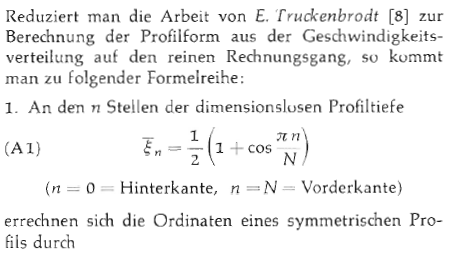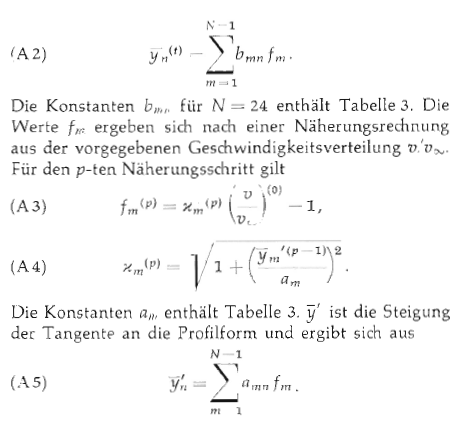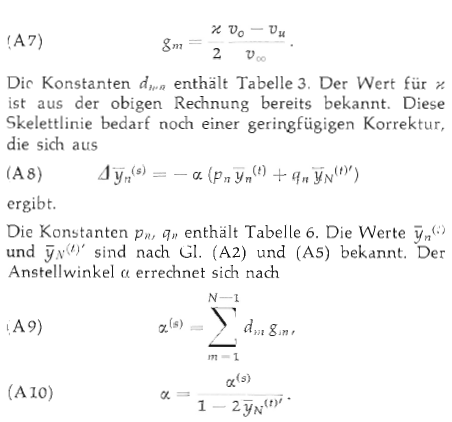Apologies in advance for a long-winded question.
Can someone who understands some airfoil theory and German language please help me understand the method outlined in this paper from Prof. FX Wortmann.
I have back-quoted what I've got so far with Google translate but it doesn't appear to be accurate especially with the given context.
If you reduce the work of E. Truckenbrodt [8] to calculate the profile shape from the speed distribution to the mere calculation, you come to the following series of formulas: 1. At the n positions of the dimensionless profile depth
Table 3 contains the constants bm for N24. The following applies to the pth approximation step
Table 3 contains the constants is the slope of the tangent to the profile shape and results from
The values amn are listed in Tables 4 and 5. The values amn for even-numbered m - n disappear. The table amn with m = 2, 4, ... is therefore used to calculate the values y, 'for n = 1, 3, ... A good estimate of the correction values x, which greatly abbreviates the approximation, can be obtained if one starts from the examples already calculated. Eq. (A2) includes (N-1) 2 232 529 operations that can be performed in about two hours with a simple electrical calculator. 2. The skeleton line of a curved profile, in which the speeds on the top of the profile (index o) and underside (index u) are different, is calculated
Table 3 contains the constants dmn. The value for z is already known from the above calculation. This skeletal line still needs a minor correction, which is reflected in
The constants pa, qn are given in Table 6. The values y, and are according to Eq. (A2) and (A5) known. The angle of attack a is calculated
The values d are also shown in Table 3. The final coordinates of a curved profile then result from (A11) = y (s) 4ys) + y (). The positive sign applies to the top of the profile.
Also with my very limited understanding with possibly incorrect translation, I've got the following questions so far
- What is the $(t)$ in $\bar{y}_n^{(t)}$ in (A-2)
- what is the $p^{th}$ approximation in (A-3)
- What is the $(s)$ in $\bar{y}_n^{(s)}$ in (A-2)
- Does (A-6) refers to the camber line calculation?





